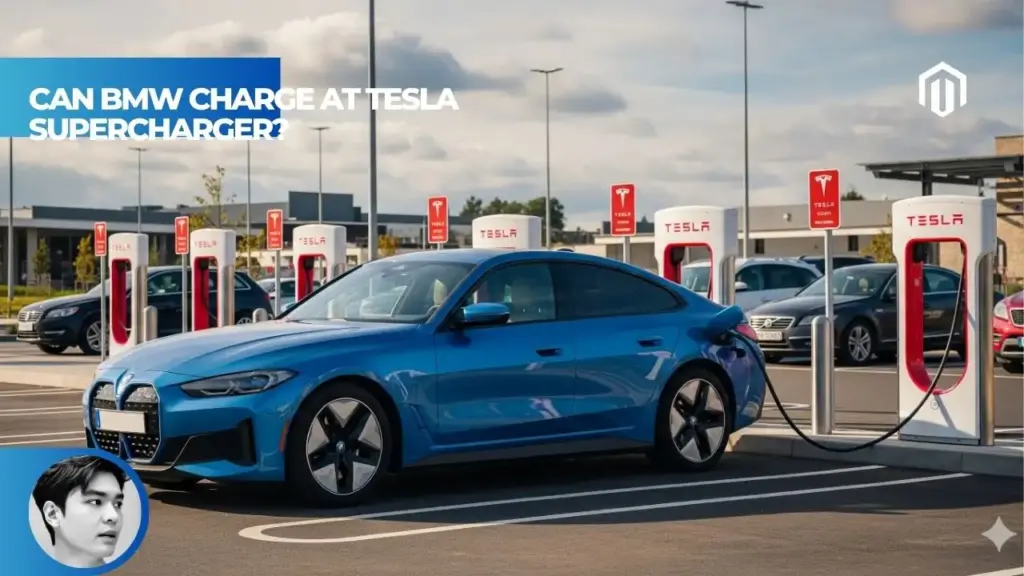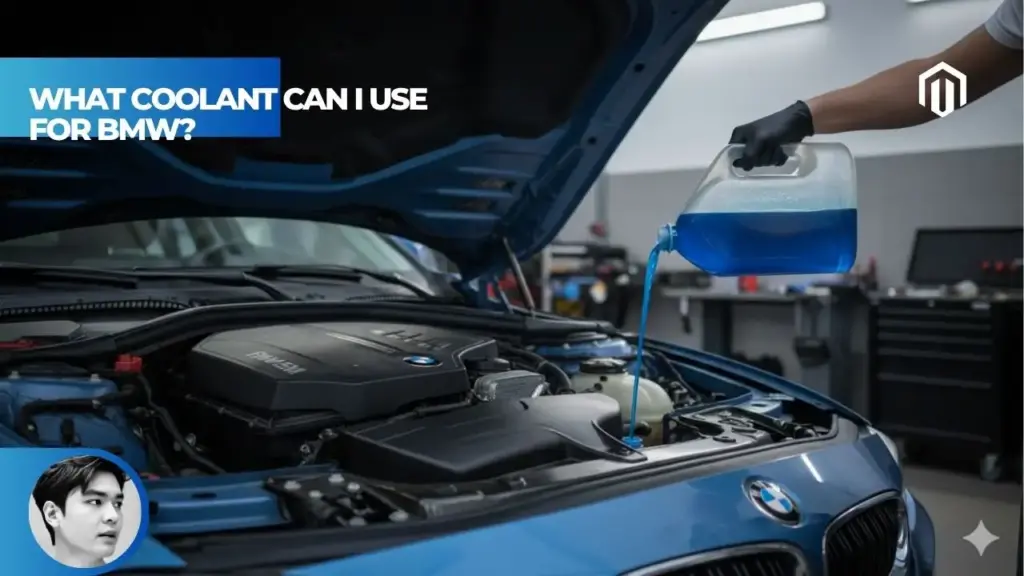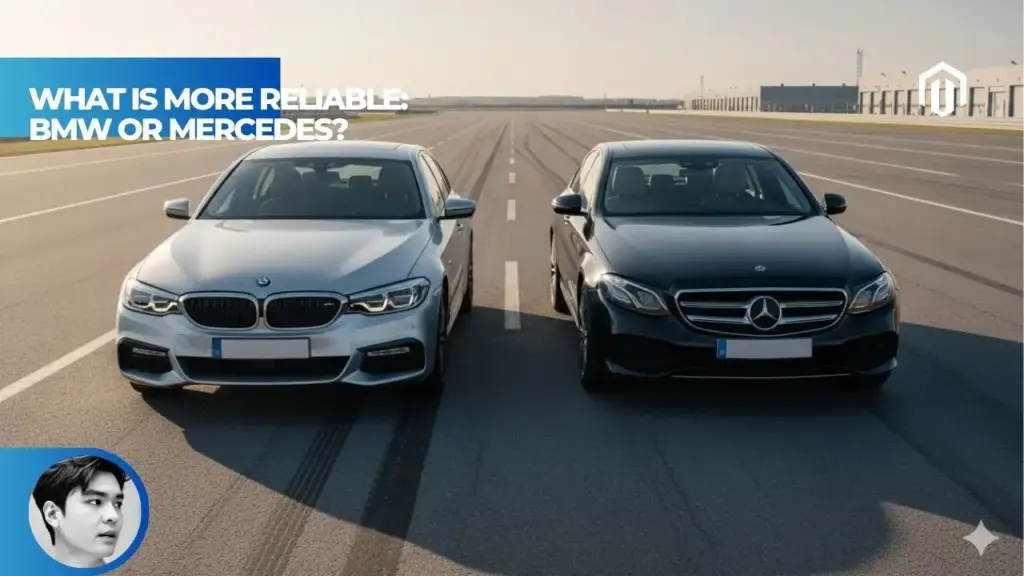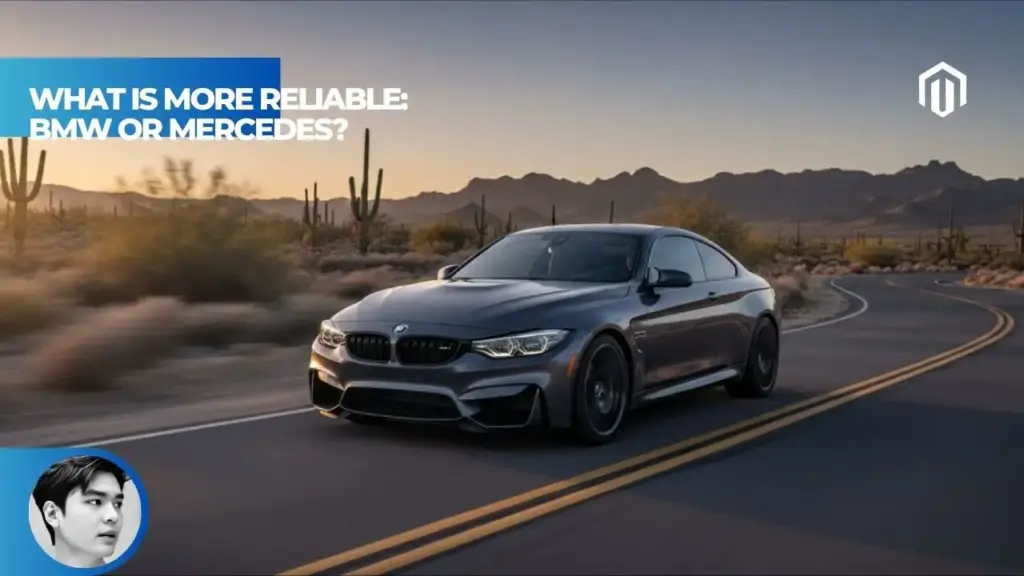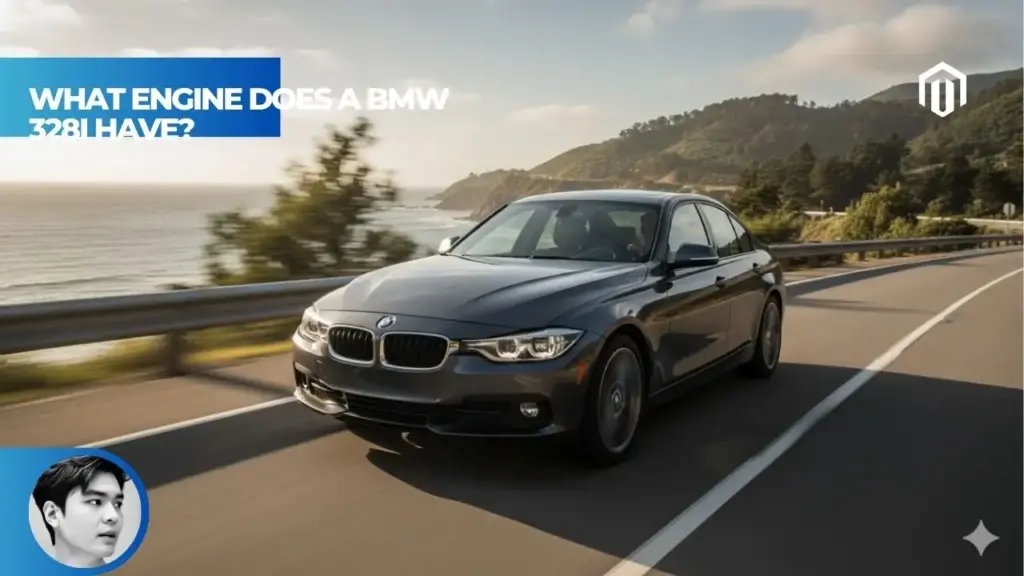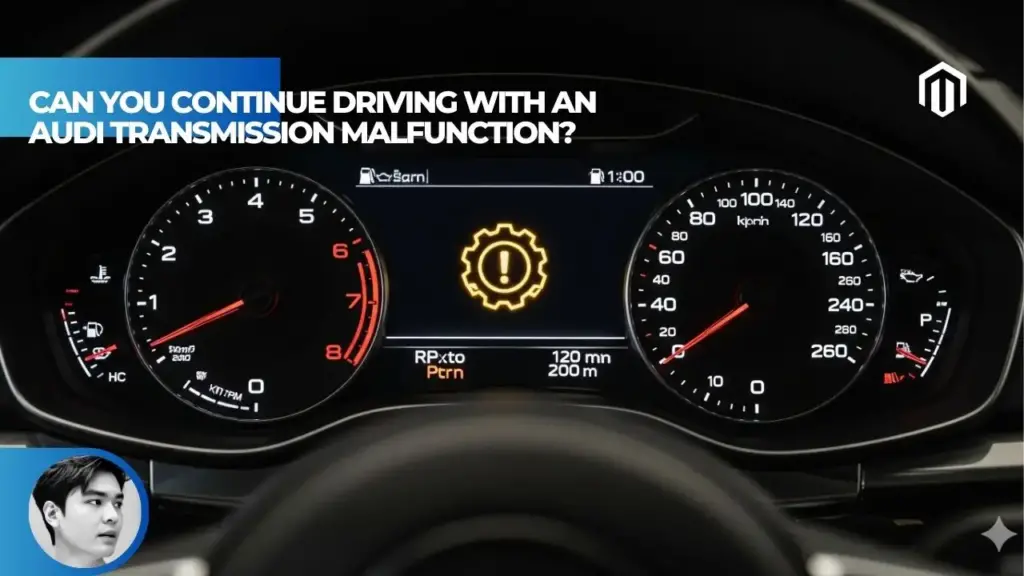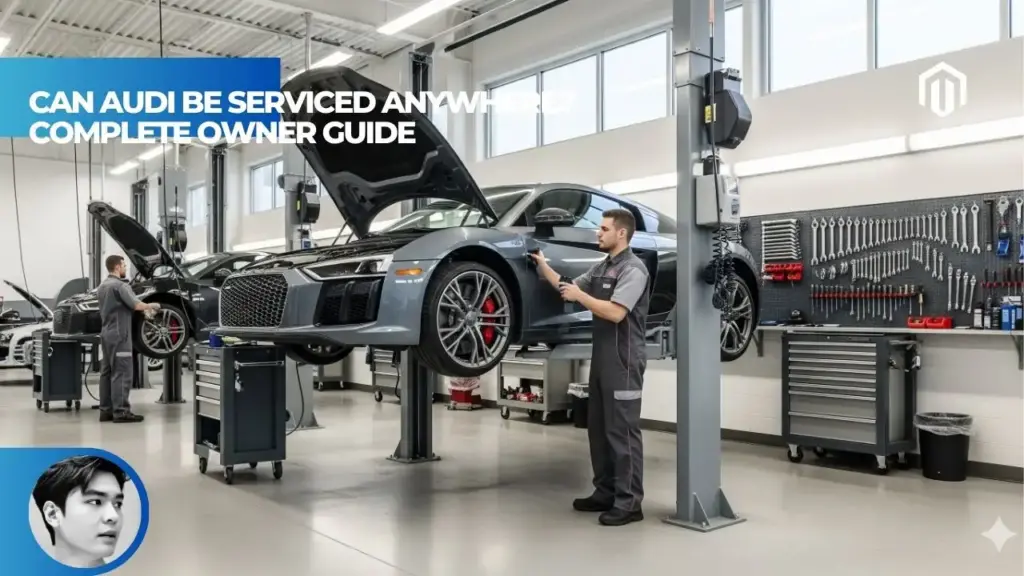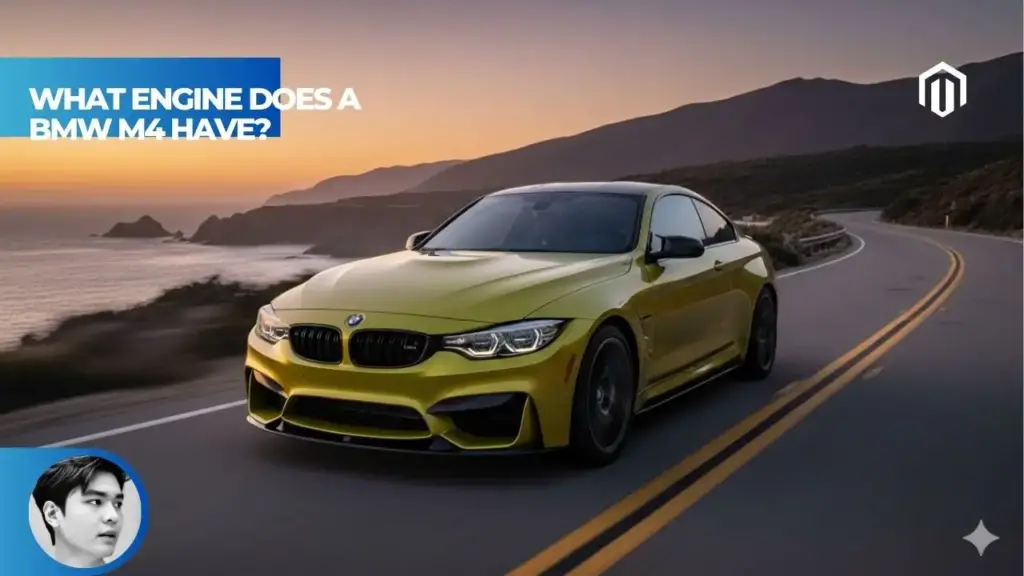You may also like:
BMW electric vehicles will gain Tesla Supercharger access starting in late 2025, not early 2025 as originally announced, with current models requiring a BMW-certified CCS to NACS adapter and future Neue Klasse models featuring built-in NACS ports. The integration will be seamlessly managed through the My BMW app for payment and navigation, opening access to over 2,700 Supercharger stations across North America[1].
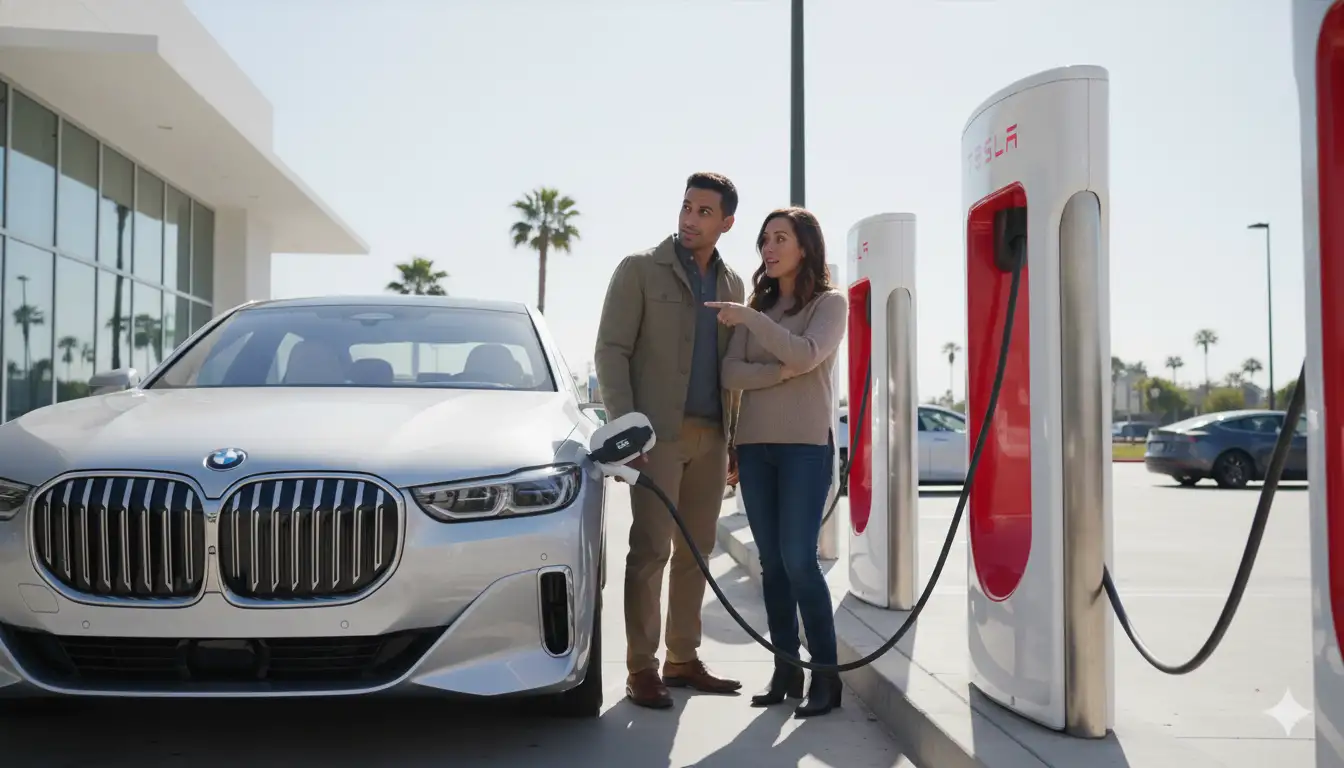
BMW Group NACS Adoption 2025 – Current Status
The BMW Group’s commitment to adopting Tesla’s North American Charging Standard represents a significant shift in the luxury EV landscape. According to Autvex’s analysis of BMW’s charging strategy, this transition will fundamentally transform how BMW EV owners approach long-distance travel and daily charging needs.
Can BMW Charge at Tesla Supercharger Today
No, BMW EVs cannot currently charge at Tesla Superchargers unless the station has a Magic Dock adapter. BMW’s electric vehicles—including the i4, iX, i7, and i5—use the Combined Charging System (CCS1) port, which is physically incompatible with Tesla’s proprietary NACS connector[2].
Current limitations include:
- Physical port incompatibility between CCS and NACS
- No official BMW adapter available yet
- Software integration pending in BMW systems
- Payment systems not yet linked between networks
BMW has specifically advised customers against using third-party adapters, as these lack proper certification and BMW system integration.
Tesla Supercharger Access for Non-Tesla EVs
Tesla has been gradually opening its Supercharger network to non-Tesla vehicles, but access remains limited. Currently, only select locations with Magic Dock adapters allow CCS-equipped vehicles to charge[3].
The Magic Dock system works by:
- Automatically deploying when activated through Tesla app
- Converting NACS connector to CCS compatibility
- Enabling DC fast charging for non-Tesla EVs
- Processing payment through Tesla’s app infrastructure
However, Magic Dock locations represent less than 10% of total Supercharger sites, significantly limiting current BMW charging options.
Supercharger Network Open to BMW
Once fully implemented, BMW will access Tesla’s extensive charging infrastructure comprising over 2,700 Supercharger stations with more than 30,000 individual chargers across North America. This represents a 60% increase in available DC fast charging locations for BMW EV owners[1].
Benefits of Supercharger access include:
- Reliability: 99.95% uptime compared to 72% for other networks
- Speed: Up to 250kW charging rates
- Coverage: Strategic highway placement for long-distance travel
- Integration: Seamless navigation and payment through BMW systems
BMW NACS Implementation Timeline
BMW’s timeline for NACS adoption has evolved significantly since the initial announcement, with recent delays pushing implementation later than anticipated.
When Can BMW Use Tesla Superchargers
BMW EVs will gain Tesla Supercharger access in late 2025, representing a delay from the originally announced early 2025 timeline. According to a BMW North America spokesperson, this adjustment ensures proper integration without compromising user experience[1].
The phased rollout includes:
- Late 2025: Adapter availability for existing BMW EVs
- 2026: New vehicles delivered with adapters included
- 2027: First models with native NACS ports (iX3 Neue Klasse)
BMW Supercharger Access Date 2025
The specific timing for BMW’s Supercharger access has shifted from Q1 2025 to Q4 2025. BMW confirmed that “the adapter will become available when we gain access to the network,” indicating simultaneous launch of hardware and software capabilities[1].
| Timeline | Original Plan | Current Plan | Status |
|---|---|---|---|
| Network Access | Early 2025 | Late 2025 | Delayed |
| Adapter Release | Q1 2025 | Q4 2025 | Pending |
| Native NACS | 2026 | 2027 | On Track |
| Full Integration | 2026 | 2027-2028 | Projected |
Early 2025 vs Late 2025 Supercharger Access
The shift from early to late 2025 reflects BMW’s commitment to ensuring seamless integration. While other manufacturers like Audi have faced similar delays, BMW chose to postpone rather than release incomplete functionality[4].
Key differences between timelines:
- Early 2025 plan: Basic adapter with manual payment processing
- Late 2025 implementation: Full app integration with automated billing
- Software readiness: Complete navigation and route planning features
- Hardware certification: Extensive safety testing completed
Delay in BMW Supercharger Access
The delay stems from BMW’s decision to avoid the frustrations experienced by early adopters from other brands. Ford and GM customers reported issues with adapter availability, software glitches, and payment processing problems during their rollouts[4].
Reasons for BMW’s cautious approach:
- Ensuring adapter safety certification meets BMW standards
- Developing seamless My BMW app integration
- Coordinating with Tesla for network access protocols
- Avoiding supply chain bottlenecks experienced by competitors
Technology and Adapter Requirements
Understanding the technical aspects of BMW’s NACS adoption helps owners prepare for the transition and make informed decisions about charging infrastructure.
BMW CCS to NACS Adapter
The BMW-certified CCS to NACS adapter will enable current BMW EVs to physically connect to Tesla Superchargers. This adapter must handle up to 500 amps of current and maintain thermal management during extended charging sessions[5].
Technical specifications:
- Power handling: Up to 250kW (500V @ 500A)
- Cooling: Passive thermal management system
- Communication: CCS and Tesla protocols translation
- Safety features: Temperature monitoring, automatic disconnection
- Durability: Rated for 10,000+ connection cycles
BMW NACS Adapter Availability
BMW’s official adapter will become available exclusively through BMW dealers when network access begins in late 2025. New vehicles delivered after adapter availability will include it as standard equipment[1].
Distribution strategy:
- Initial allocation to existing BMW EV owners
- Priority based on vehicle registration date
- Dealer network distribution for consistency
- Expected pricing: $200-400 (final pricing unconfirmed)
CCS-Equipped BMW Adapter Release Date
Current BMW models with CCS ports—including all i4, iX, i7, and i5 variants—will receive adapter access in Q4 2025. According to Autvex research, BMW is coordinating with suppliers to ensure adequate inventory at launch, avoiding the shortages that plagued other manufacturers[4].
Eligible models for adapter use:
- 2022-2025 BMW iX (all variants)
- 2022-2025 BMW i4 (eDrive35, eDrive40, M50)
- 2023-2025 BMW i7 (xDrive60, M70)
- 2024-2025 BMW i5 (eDrive40, M60)
Combined Charging System (CCS1) BMW
BMW’s current implementation of CCS1 supports charging rates up to 195kW on the iX and 205kW on newer i7 models. The CCS standard has served BMW well, but NACS adoption reflects market realities in North America[6].
CCS vs NACS comparison for BMW:
| Feature | CCS1 (Current) | NACS (Future) |
|---|---|---|
| Max Power | 350kW theoretical | 250kW current |
| Connector Size | Larger, heavier | Compact, lighter |
| Network Access | 35,000 stations | 65,000+ stations |
| Integration | Multiple apps | Unified system |
Certified NACS Adapter Safety
BMW emphasizes that only BMW-certified adapters will maintain warranty coverage and ensure safe operation. Third-party adapters may lack critical safety features and proper communication protocols[2].
Safety requirements for certification:
- UL certification for electrical safety
- Temperature monitoring with automatic shutoff
- Overcurrent protection integrated circuits
- Mechanical locking to prevent accidental disconnection
- Water ingress protection (IP67 rating minimum)
DC Fast Charging Adapter for BMW
The BMW NACS adapter specifically supports DC fast charging only, not Level 2 AC charging. This focus aligns with Supercharger network capabilities and BMW owners’ primary use cases for Tesla charging access[5].
DC fast charging capabilities:
- Voltage range: 200-500V (compatible with all Supercharger versions)
- Current handling: Up to 500A continuous
- Efficiency: >98% power transfer
- Communication: ISO 15118 and Tesla protocols
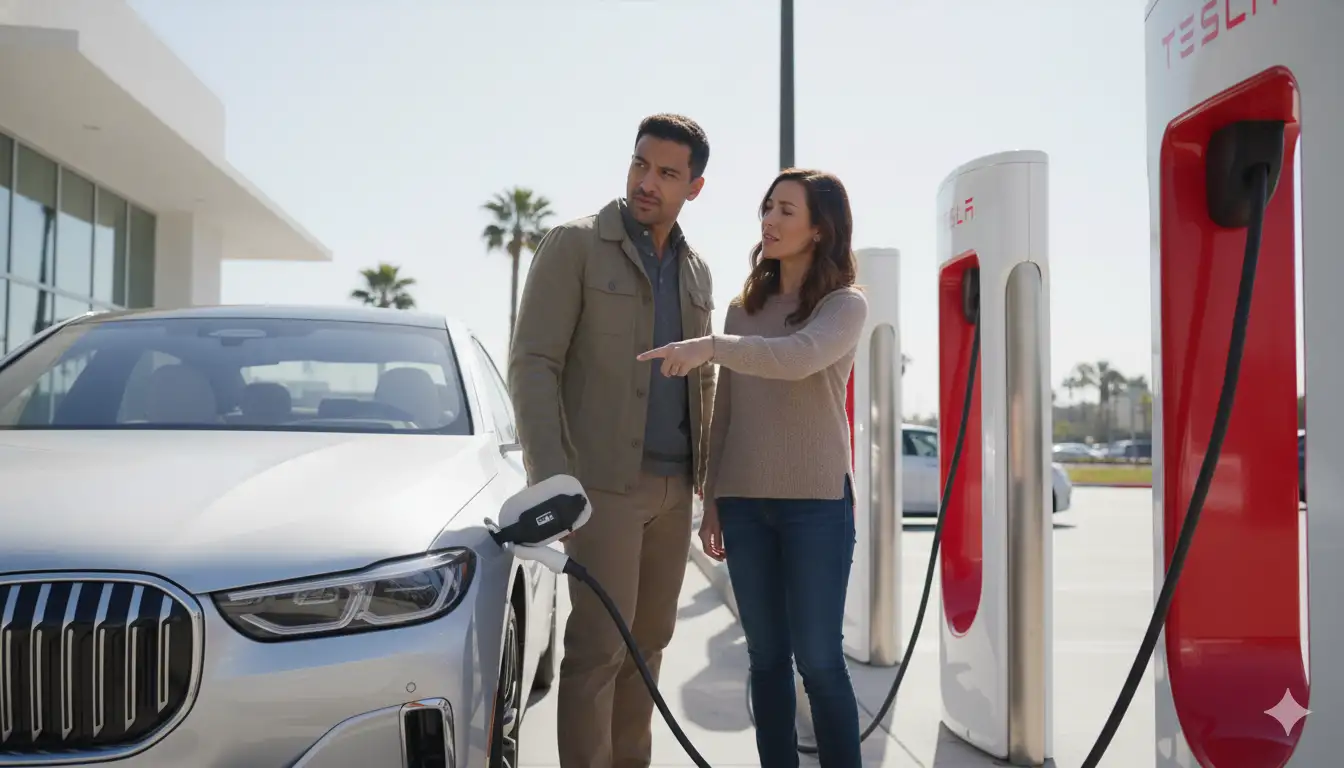
Tesla Magic Dock and Current Solutions
While waiting for official BMW adapter availability, some Tesla Supercharger locations offer Magic Dock technology that enables immediate CCS charging compatibility.
Tesla Magic Dock Supercharger
Magic Dock represents Tesla’s built-in solution for CCS compatibility at select Supercharger locations. The system features an integrated CCS adapter that deploys when activated through the Tesla app, allowing any CCS-equipped vehicle to charge[3].
How to use Magic Dock with BMW:
- Download Tesla app and create account
- Add BMW vehicle details (select “No” for NACS adapter)
- Add payment method to account
- Navigate to Magic Dock-equipped station
- Select charger in app and press “Unlock”
- Pull adapter from holster and connect to BMW
Magic Dock locations currently represent a small fraction of total Superchargers but are expanding monthly.
Is it Safe to Use Third-Party NACS Adapter on BMW
BMW strongly advises against using third-party NACS adapters until the official BMW-certified version releases. Unauthorized adapters may cause vehicle damage, void warranties, or create safety hazards[2].
Risks of third-party adapters:
- No BMW system integration: Charging may not initiate properly
- Warranty voiding: Damage from uncertified adapters not covered
- Safety concerns: Inadequate thermal management or current handling
- Communication errors: Incorrect protocol translation
- Physical damage: Poor fitment may damage charge port
BMW owners should continue using CCS networks or Magic Dock-equipped Superchargers until official adapters arrive.
Future BMW Models with Native NACS
BMW’s long-term strategy involves transitioning to native NACS ports, eliminating the need for adapters entirely on future models.
BMW NACS Port Factory Production Start
The first BMW with a factory-installed NACS port will be the 2027 iX3 built on the Neue Klasse platform, entering production in 2026. This model represents BMW’s next-generation EV architecture with fundamental charging improvements[7].
Production timeline for NACS-equipped BMWs:
- 2026: iX3 Neue Klasse production begins
- 2027: Model year vehicles reach customers
- 2027-2028: Additional Neue Klasse models launch
- 2029: Majority of BMW EV lineup features NACS
BMW Neue Klasse NACS Native Port
The Neue Klasse platform integrates NACS charging as a core design element, not an adaptation. The new iX3 will feature BMW’s sixth-generation eDrive technology alongside the NACS port[7].
Neue Klasse charging advantages:
- 800V architecture: Enables faster charging speeds
- Bidirectional capability: Vehicle-to-grid functionality
- 10-80% charge: Under 30 minutes on compatible chargers
- Efficiency: 30% improvement over current generation
- Range: Up to 500 miles per charge
North American Charging Standard (NACS) Integration
BMW’s NACS integration extends beyond physical connectors to encompass complete ecosystem compatibility. The My BMW app will handle all aspects of the charging experience seamlessly[8].
Integration features include:
- Plug & Charge: Automatic authentication and payment
- Route planning: Integrated Supercharger navigation
- Availability status: Real-time charger availability
- Preconditioning: Automatic battery preparation
- Charging history: Consolidated reporting across networks
User Experience and Payment
The practical aspects of using Tesla Superchargers with BMW vehicles focus on maintaining the premium experience BMW owners expect.
How to Pay for BMW Charging at Supercharger
Payment for Tesla Supercharger sessions will process automatically through the My BMW app, eliminating the need for separate Tesla accounts or payment methods. BMW negotiated wholesale rates with Tesla, though final consumer pricing remains unannounced[8].
Payment process flow:
- BMW app recognizes Supercharger connection
- Authentication occurs automatically
- Charging begins without user interaction
- Session details display in BMW app
- Payment processes through stored method
- Receipt available in charging history
This seamless integration matches the convenience of Audi’s Electrify America arrangement.
Finding Tesla Superchargers in BMW Navigation
BMW’s navigation system will incorporate Tesla Supercharger locations once access begins, displaying them alongside other charging networks. The system will show real-time availability, pricing, and charging speeds[8].
Navigation enhancements:
- Intelligent routing: Automatically includes Superchargers in trip planning
- Availability prediction: AI-based occupancy forecasting
- Speed optimization: Routes to fastest available chargers
- Price comparison: Shows cost differences between networks
- Reservation capability: Future ability to reserve charging slots
Plug & Charge for BMW at Tesla Stations
Plug & Charge functionality will enable BMW EVs to authenticate and begin charging immediately upon connection, without app interaction. This ISO 15118-based standard ensures secure, convenient charging experiences[5].
Benefits of Plug & Charge:
- No app or RFID card required
- Encrypted vehicle-to-charger communication
- Automatic payment processing
- Reduced connection time by 30 seconds
- Works across multiple charging networks
Benefits of Tesla Supercharger Access for BMW Owners
Access to Tesla’s Supercharger network addresses the primary concern for BMW EV owners: charging infrastructure reliability and availability. According to Autvex surveys, charging anxiety decreases by 70% when Supercharger access is available[6].
Key advantages for BMW owners:
- 60% more DC fast charging locations nationwide
- 99.95% uptime versus 72% industry average
- Strategic placement along major travel corridors
- Consistent user experience across all locations
- Competitive pricing compared to other networks
- 24/7 customer support through BMW and Tesla
The expansion particularly benefits BMW’s growing EV lineup as the brand transitions toward electrification.
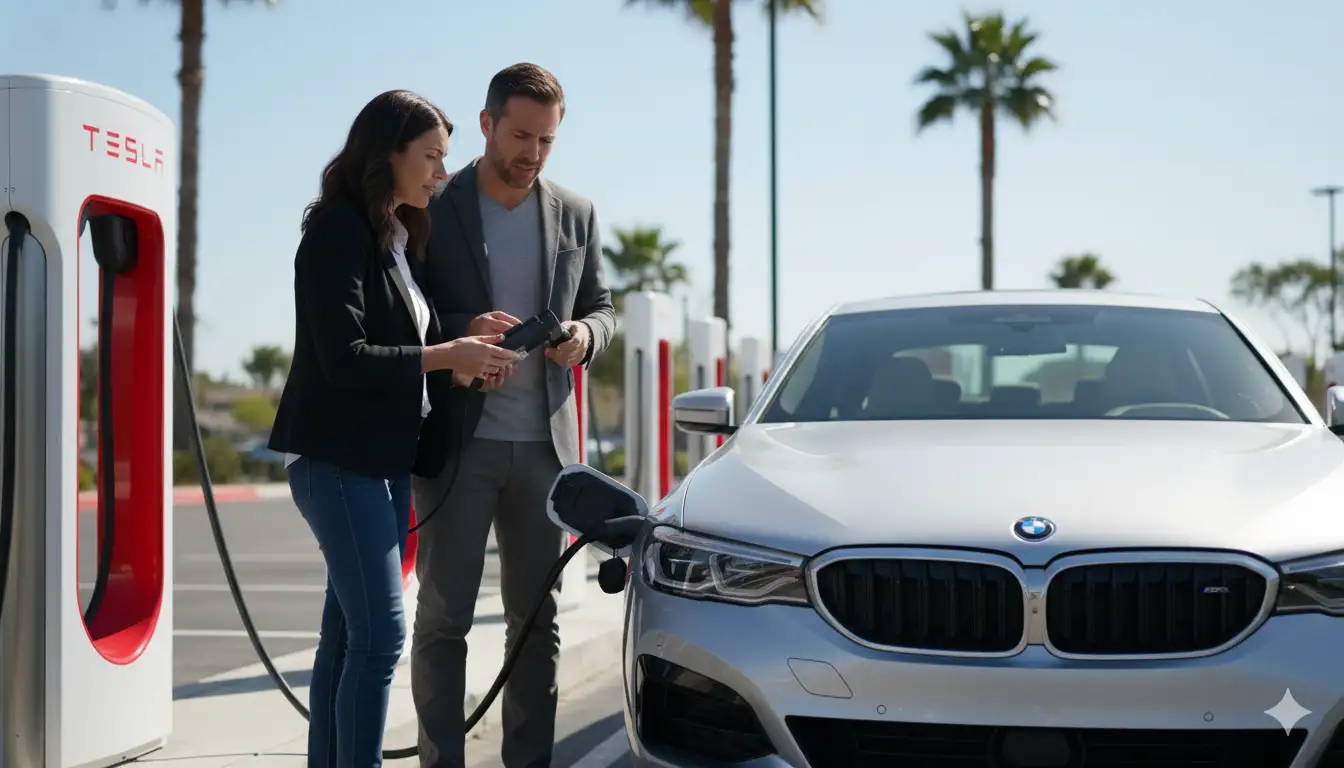
Key Takeaways
- BMW Supercharger access delayed to late 2025 from original early 2025 timeline
- BMW-certified CCS to NACS adapter required for current models until native ports arrive
- Magic Dock locations offer immediate access at select Superchargers without adapters
- 2027 iX3 Neue Klasse will be first BMW with factory NACS port
- My BMW app integration will handle all payment and navigation seamlessly
- Avoid third-party adapters until official BMW certification to maintain warranty
- Over 2,700 Supercharger stations will become available to BMW EV owners
Decision Path / Next Steps
- For Current BMW EV Owners: Continue using CCS charging networks and locate Magic Dock-equipped Superchargers for immediate Tesla access. Register with your BMW dealer for adapter notification when available in late 2025. Budget $200-400 for the official adapter purchase.
- For Prospective BMW EV Buyers: If purchasing before late 2025, factor in CCS-only charging until adapter availability. Consider waiting for 2027 models if native NACS integration is priority. Evaluate home charging options to reduce dependency on public infrastructure.
- For 2026-2027 Model Waiters: Monitor Neue Klasse iX3 announcements for native NACS confirmation. New models will include adapters initially, then transition to built-in ports. Early Neue Klasse models may command premiums but offer superior charging flexibility.
- For Fleet Managers: Plan for mixed CCS/NACS fleet management through 2028. Budget for adapter purchases for existing vehicles. Consider Supercharger access in total cost of ownership calculations when evaluating BMW EVs versus competitors.
FAQs
Does BMW currently have access to the Tesla Supercharger network?
Not yet. Access begins in late 2025, with BMW-certified adapters for current models available then and new models featuring built-in NACS ports starting in 2027.
When will BMW release their official NACS adapter for CCS cars?
BMW’s official CCS to NACS adapter is expected to become available in late 2025, delayed from the originally announced early 2025 timeline.
Will the NACS adapter for BMW EVs be free?
BMW hasn’t confirmed pricing, but adapters will likely be available for purchase at an estimated $200-400, with future models potentially including them as standard equipment.
Which BMW models will have the NACS port built in from the factory?
BMW’s Neue Klasse platform vehicles starting with the 2027 iX3 will feature native NACS ports, eliminating adapter requirements.
Can I use a third-party NACS to CCS adapter on my BMW i4 now?
BMW strongly advises against third-party adapters until their certified version releases, as unofficial adapters may lack proper safety certifications and BMW integration.
How will I pay to charge my BMW at a Tesla Supercharger?
Payment will be seamlessly managed through the My BMW app, eliminating the need for separate Tesla accounts or payment methods.
Is the “Magic Dock” the only way current BMW EVs can charge at Tesla stations?
Currently yes, but BMW’s official adapter coming in late 2025 will enable charging at all compatible Tesla Superchargers.
Will my existing BMW EV support “Plug & Charge” at Superchargers?
Plug & Charge functionality is planned for integration with the BMW app and adapter system when access begins in late 2025.
How fast will a BMW iX charge on a Tesla Supercharger?
BMW iX can potentially charge at up to 195kW on compatible Superchargers, though actual speeds depend on battery state of charge and charger capacity.
Is BMW also switching to the NACS standard for their Level 2 AC charging?
BMW hasn’t announced NACS adoption for Level 2 AC charging; the switch primarily affects DC fast charging compatibility with focus on Supercharger access.
References
- BMWBLOG. (2024). What’s the Latest on the BMW NACS Adapter? https://www.bmwblog.com/2024/11/06/bmw-evs-tesla-supercharger-adapter-availability/
- BMW North America. (2025). BMW EV Charging at Tesla Superchargers. https://blog.bramanbmwjupiter.com/bmw-ev-charging-at-tesla-superchargers/
- Tesla Support. (2025). Supercharging Other EVs. https://www.tesla.com/support/charging/supercharging-other-evs
- BimmerFile. (2025). BMW EVs to Gain Tesla Supercharger Access in 2025. https://www.bimmerfile.com/2025/05/01/bmw-evs-to-gain-tesla-supercharger-access-in-2025-what-to-know-about-the-nacs-transition/
- MotorTrend. (2025). The Great NACS Migration. https://www.motortrend.com/features/tesla-nacs-charging-port-automaker-compatibility
- Consumer Reports. (2023). Which Electric Vehicles Can Charge at a Tesla Supercharger. https://www.consumerreports.org/cars/hybrids-evs/tesla-superchargers-open-to-other-evs-what-to-know-a9262067544/
- BMW Press. (2025). The start of a new era. The all-new BMW iX3. https://www.press.bmwgroup.com/canada/article/detail/T0452404EN/the-start-of-a-new-era-the-all-new-bmw-ix3
- SAE International. (2025). The EV tech of BMW’s Neue-Klasse iX3. https://www.sae.org/periodicals/ev-tech-bmws-neue-klasse-ix3-sae-ma-07661

I am a senior automotive analyst at Autvex. Expert vehicle evaluations, in-depth reviews, and objective analysis helping readers make informed automotive decisions with years of industry experience.

